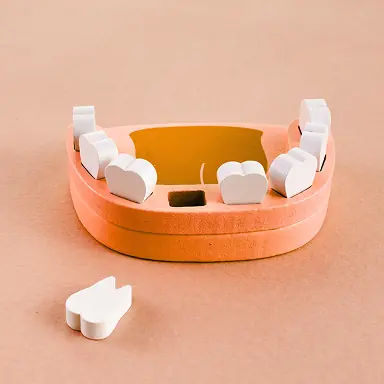A pulpotomy is often the best way to treat a baby tooth when the inner tissue has been affected by decay or injury. It’s a straightforward procedure commonly used in pediatric dentistry to ease discomfort and help the tooth remain in place until it’s time for the adult tooth to come in.
What Is a Pulpotomy?
A pulpotomy is a dental treatment that removes only the infected or inflamed portion of the tooth’s pulp—the soft tissue inside the tooth—while preserving the healthy part. This targeted approach prevents further infection, keeps the baby tooth stable, and supports normal function.







How Is a Pulpotomy Different from a Root Canal?
While both a root canal and a pulpotomy involve treating the pulp, a pulpotomy only removes the diseased tissue in the crown portion of the baby tooth and leaves the root pulp untouched, making it less invasive.
On the other hand, a root canal removes all pulp tissue from both the crown and root and is typically reserved for permanent teeth.
Since baby teeth have a different structure and are temporary by nature, a pulpotomy is often the preferred approach to maintain them until they naturally fall out.
What Happens During a Pulpotomy?
After gently numbing the area with local anesthesia, our dentist removes the damaged pulp from the crown part of the tooth. The remaining healthy pulp in the roots is treated with a medication to prevent infection and promote healing.
Once that’s complete, the tooth is sealed with a filling or a stainless steel crown to protect it and restore function.
The entire process usually takes about 30 to 60 minutes, depending on the child’s age and the tooth involved.




Why Would a Child Need a Pulpotomy?
When decay or trauma affects the inner tissue of a baby tooth, a pulpotomy can remove the problem area before it worsens.
Preserving baby teeth through a pulpotomy supports proper chewing, speech development, and facial structure. It also helps avoid the complications that can come with premature tooth loss, such as crowding or misalignment.
Does a Pulpotomy Hurt?
Thanks to modern dental anesthesia and gentle techniques, the procedure is generally painless. Some mild sensitivity or discomfort may occur for a day or two afterward, but this is manageable with over-the-counter pain relief and usually resolves quickly.
Aftercare Tips for Your Child After a Pulpotomy
- Avoid chewing on the treated side for at least 24 hours
- Maintain regular brushing and flossing with extra care around the treated tooth
- Offer soft foods initially and gradually return to a normal diet
- Monitor for any signs of swelling, prolonged pain, or unusual symptoms
- Attend all recommended follow-up visits to ensure proper healing











